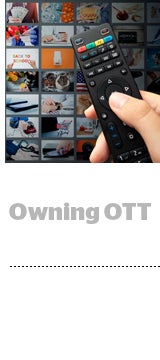Roku’s $150 million purchase of dataxu illustrates the streaming giant’s vision to own and operate an open marketplace for OTT inventory.
The deal, announced Tuesday, gives Roku a self-serve buying platform that hooks into both its own and other OTT premium video supply, as well as display and cross-platform media. That positions Roku to operate a marketplace for the OTT industry, similar to what Xandr is building at AT&T for advanced TV inventory.
“The acquisition of dataxu furthers our ambition to right-size media spend [in streaming] against consumption,” Alison Levin, Roku’s VP of ad sales and strategy, told AdExchanger Tuesday. “This provides our own self-serve platform for buyers to optimize across linear, OTT, desktop and mobile.”
Despite now owning a DSP, Roku aspires to remain open, and it will continue to give other DSPs access its inventory. Roku has relationships with Adobe, Innovid and SpotX, among other ad tech partners.
But through its proprietary relationship with dataxu, Roku will offer buyers access to the Roku ID, which leverages data on Roku’s 30.5 million logged-in users for targeting across platforms.
“The benefit of the marriage between the two companies is the proprietary relationship Roku has with consumers,” Levin said. “That will only accelerate.”
In addition to its supply integrations in display, dataxu has relationships with major television providers such as Viacom and Sky through its TotalTV marketplace, and it was one of the first DSPs to hook into Amazon Fire TV. It remains to be seen whether dataxu can maintain those relationships now that it’s owned by a competitor, but that is certainly Roku’s intent.
“We’re incredibly focused on making sure the investment in OTT continues to increase, and being an open platform is the best way to do that,” Levin said. “Dataxu is not a channel DSP, and that will continue to be the case.”
Dataxu’s self-serve tools will help Roku expand OTT accessibility to its mid-market customer base to grow the pool of OTT buyers. Roku aims to expand the overall OTT marketplace, which commands 30% of viewing hours but only 3% of advertising dollars, according to Magna.
“Linear TV is only accessible to clients who have significant budgets,” Levin said. “We’re giving all different brands access to the largest streaming platform.”
Roku declined to share specifics on how it will integrate dataxu with its existing ad stack but said the platform complements Roku’s business with data science, engineering and performance buying chops. It’s not yet clear whether Roku will keep the dataxu brand.
“The future of television advertising is data-driven, measurable and accessible to brands of all sizes,” Levin said. “The acquisition of dataxu helps us to accelerate that.”
Correction: This story previously said Roku works with Telaria. Roku works with SpotX as its sell-side programmatic partner.














